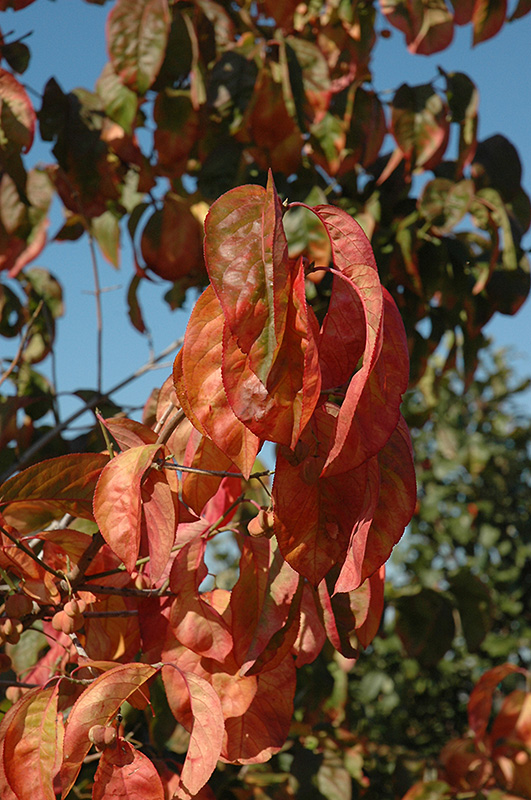Height: 25 feet
Spread: 10 feet
Sunlight:
![]()
![]()
![]()
Hardiness Zone: 4
Other Names: Burning Bush, Bitter Ash
Description:
This attractive versatile spreading shrub can grow into a small tree; fall color is variable from yellow to pink and red; shapely growth habit, interesting corky wings on branches; very adaptable; showy fruit is purplish-red
Ornamental Features
Eastern Wahoo has olive green deciduous foliage on a tree with an upright spreading habit of growth. The pointy leaves turn an outstanding red in the fall. It produces purple capsules from early to late fall. The warty brown bark and olive green branches are extremely showy and add significant winter interest.
Landscape Attributes
Eastern Wahoo is a multi-stemmed deciduous tree with an upright spreading habit of growth. Its average texture blends into the landscape, but can be balanced by one or two finer or coarser trees or shrubs for an effective composition.
This is a relatively low maintenance tree, and can be pruned at anytime. It has no significant negative characteristics.
Eastern Wahoo is recommended for the following landscape applications;
- Accent
- Hedges/Screening
- Naturalizing And Woodland Gardens
Planting & Growing
Eastern Wahoo will grow to be about 25 feet tall at maturity, with a spread of 10 feet. It has a low canopy with a typical clearance of 2 feet from the ground, and is suitable for planting under power lines. It grows at a medium rate, and under ideal conditions can be expected to live for 40 years or more.
This tree performs well in both full sun and full shade. It prefers to grow in average to moist conditions, and shouldn't be allowed to dry out. It is not particular as to soil type or pH. It is highly tolerant of urban pollution and will even thrive in inner city environments. This species is native to parts of North America.



